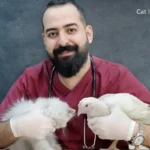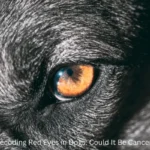Embarking on the Journey: Dog Cancer Treatment
Today’s focus centers on a subject close to every pet lover’s heart. Four-legged companions fill life with happiness, and when health challenges appear, the instinct to provide comfort and care grows stronger than ever. This thoughtful conversation explores ways to nurture their well-being, reflects on real experiences, and offers perspective on emotional strength required to stand by them through demanding moments.
| Type of Cancer | Symptoms |
| Lymphoma | Swollen lymph nodes, weight loss, lethargy, loss of appetite |
| Osteosarcoma | Bone pain, limping, fractures |
| Hemangiosarcoma | Skin tumors, bleeding, internal bleeding |
| Mast cell tumor | Skin lumps, bumps, or ulcers |
| Melanoma | Skin tumors, dark color, bleeding |

Understanding the Diagnosis:
Hearing words like “canine illness” can make hearts drop instantly, dimming all those bright moments shared together. That wave of shock and uncertainty is normal, yet pausing to breathe and collect information becomes key. Gaining clarity about what’s happening, how advanced it is, and which steps can bring comfort sets the foundation for guiding a loyal companion through a tough chapter with strength and care.
| Test | Purpose |
| Check-Up | First check to spot any lumps, odd changes, or anything unusual. |
| Bloodwork | Evaluates overall health, organ function, and presence of infection or anemia. |
| Urine Test | Checks for urinary tract infections or kidney disease. |
| X-rays | Visualizes bones, internal organs, and masses. |
| Ultrasound | Examines soft tissues, internal organs, and fluid accumulations. |
| Fine-needle aspiration | Collects cells from a mass for examination under a microscope. |
| Biopsy | Removes a small tissue sample for examination under a microscope. |
Emotional Rollercoaster:
It’s a tough road, and nothing about it feels simple. We’re caught in a whirlwind of emotions—fear, heartbreak, frustration, and those quiet moments where everything feels overwhelming. But through it all, they’re watching us, feeling our energy, leaning on us in ways they can’t explain. Even when we’re barely holding on, they’re looking to us for calm, for warmth, for that steady presence they’ve always known.
What recent breakthroughs have emerged for this condition?
Exploring available options opens doors to new possibilities for companions facing serious health concerns. Each path varies, shaped by individual needs and unique responses. Consulting with an experienced professional who understands such cases can help identify an approach that aligns with comfort, effectiveness, and long-term care goals for your cherished friend.
Surgical Interventions: Surgery frequently serves as a main approach for many situations. An experienced surgeon can excise tumors or affected tissues, offering a companion a real opportunity for recovery. Discussing potential risks and benefits with a specialist ensures informed decisions and helps choose the option that best supports comfort and long-term well-being.
Chemotherapy Breakdown: Though it can feel intimidating, this approach is often essential for managing specific conditions. Its aim is to reduce discomfort while addressing abnormal cell growth effectively. Understanding how it works, what to anticipate, and ways to support a companion throughout makes a big difference. A knowledgeable professional will provide guidance and explain each step, ensuring care is delivered safely and outcomes are optimized.
Radiation therapy is an option when surgery isn’t sufficient or when the affected area is difficult to reach. This approach delivers controlled doses of radiation to reduce abnormal growths and eliminate harmful cells. Specialists in this field create customized plans to ensure the best results while minimizing unwanted effects.
Nanoparticle Drug Delivery: This cutting-edge approach employs microscopic particles to deliver medicine directly to affected cells, increasing precision while minimizing side effects. Ongoing research is exploring its potential for treating specific conditions in these companions, with early findings suggesting promise for gentler, more effective solutions in the future.
Oncolytic Viruses: These specially engineered viruses target and destroy harmful cells while leaving the rest unharmed. Researchers are studying their potential to combat specific tumors, including those linked to osteosarcoma and melanoma. Ongoing experiments aim to determine if this approach could become a promising option for those battling severe illnesses, bringing hope for more effective options.
These options showcase numerous advancements, providing each companion a greater opportunity to recover through personalized, cutting-edge therapies.

Immunotherapy Advancements:
Lately, immunotherapy has shown great promise in helping our furry companions fight serious illnesses. By boosting their own natural defenses, this method aims to identify and eliminate harmful cells, giving them a better chance at feeling well again. While it’s still evolving, this option offers new hope for those facing challenging medical battles.
Holistic Approaches:
Alongside conventional treatments, many caretakers turn to holistic approaches to support companions on a healing journey. This can include modifying meals, introducing herbal supplements, exploring acupuncture, or using other natural therapies. While consulting a knowledgeable professional remains essential, some find that combining these practices contributes to overall wellness and provides a more rounded path toward recovery.
Finding the Right Veterinary Team:
When addressing cancer in animals, having the right team is essential. Oncologists, experienced surgeons, and a caring support staff all contribute to delivering thorough and effective care. Researching reputable clinics in your area and gathering recommendations from trusted sources can ensure companions receive top-quality guidance and treatment.
Leading Animal Hospitals in the USA:
Animal Cancer Care Clinic (ACC Clinic) – Los Angeles, California:
This facility is well known for offering a full range of advanced procedures designed to address complex physical challenges in animals. Their approach uses cutting-edge technology to perform highly precise internal operations. Techniques often involve removing or modifying abnormal structures with exact methods tailored to each individual case.
Scientifically developed compounds are applied directly to targeted areas, enhancing effectiveness while minimizing impact on surrounding tissues. When direct intervention isn’t possible, carefully calibrated equipment delivers measured waves or particles to affected zones with precision. Committed to leading in modern veterinary science, this facility combines innovative research with data-driven systems to improve outcomes and overall quality of life for every companion.
The Oncology Service (TOS) – Leesburg, Virginia:
This facility offers multiple carefully designed approaches tailored to each animal’s individual circumstances. Every stage—from initial consultation to ongoing care—is handled with precision and thoughtfulness. Staff take time to understand specific needs, preferences, and daily routines, enabling recommendations that align closely with what each companion responds to.
Each plan is closely monitored and adjusted over time, aiming for maximum effectiveness while maintaining comfort and familiarity throughout. Focus goes beyond simply addressing an issue; it centers on finding the most suitable path forward through careful observation, experience, and genuine attention to detail.
Colorado State University Veterinary Teaching Hospital – Fort Collins, Colorado:
This prestigious university-affiliated center leads in advanced animal research, earning recognition for contributions to scientific progress in tackling complex internal challenges. It offers access to specialized technologies and experimental protocols rarely found elsewhere. Through participation in investigative programs and academic studies, this institution plays a key role in shaping future innovations focused on animal care.
Caretakers seeking cutting-edge procedures during challenging situations often turn to this facility, where academic expertise meets practical application. Its laboratories and staff continually refine strategies designed to enhance comfort, function, and daily quality of life for animals facing demanding circumstances.
Prominent Veterinary Oncologists:
Dr. Susan – ACC Clinic, Los Angeles:
She is well known for her skill in performing complex surgical procedures that demand precision and careful attention. Many admire how she approaches each case personally, taking time to understand specific needs and ensuring every detail receives thoughtful consideration.
Dr. James Oncology Expert – The Oncology Service, Leesburg:
Specializes in a range of medical approaches, with a focus on immunotherapy. Actively engaged in research to improve well-being and overall health.
Professor Emily Researcher – Colorado State University:
Known for expertise in oncology research, she provides comprehensive treatment options, including access to clinical trials. Costs for managing tumor-related conditions or similar illnesses can vary based on chosen methods, illness severity, and clinic location. Typically, expenses range from several hundred to several thousand dollars for procedures such as surgery, chemotherapy, or radiation therapy.
Treatment Cost

Let’s dive into a topic that isn’t easy but truly matters. Watching a beloved companion struggle can be heart-wrenching, and figuring out available options often feels overwhelming.
One major factor to consider is cost. Expenses can vary widely depending on method, severity, and location. Here’s a rough guide for common approaches:
Surgery: $500 to $6,000
Chemotherapy: $3,000 to $10,000
Radiation therapy: $3,000 to $7,000
Immunotherapy: $1,500 to $5,000
Targeted therapy: $2,500 to $10,000
Keep in mind, these figures are estimates. Actual costs may be higher or lower based on individual circumstances. For precise guidance, having an open conversation with a knowledgeable professional is key—they can help determine the most suitable plan for a companion’s specific needs.
Now, here are some things that might play into the cost:
Here are a few factors that can influence overall cost:
Type of condition: Some issues are more complex than others. For example, managing lymphoma often requires multiple steps and resources, while something like a mast cell lump tends to be simpler to handle.
Stage of condition: Think of it like progressing through levels in a game. Early stages are generally easier to manage and less resource-intensive. As conditions advance, care becomes more involved, demanding extra time, attention, and specialized treatments.
Care approach: Certain treatments carry higher costs. Advanced methods using specialized medications often come with a premium price compared to standard procedures.
Location: Geographic area can affect fees. Larger cities tend to have higher costs, while smaller towns or rural areas often offer more affordable options—similar to how shopping prices vary by region.
If a companion is facing a difficult period, reaching out to knowledgeable professionals is crucial. They can guide decisions and ensure every furry friend receives the attention, care, and comfort they deserve.
Financial Planning:
Caring for a furry companion during difficult times can be stressful, but there are ways to ease financial strain:
Grab Pet Insurance:
Coverage from a pet-focused insurance provider can be a real lifesaver when unexpected situations arise. Instead of scrambling when urgent needs pop up, insurance lets you concentrate on what matters—making sure a buddy gets proper attention without constant worry. Think of it as a safety net that provides peace of mind during challenging moments.
Vet Window Shopping:
Don’t settle on the first clinic that comes up. Take time to explore options, ask questions, and compare services. It’s like finding a reliable mechanic—you want someone knowledgeable, attentive, and patient. A little research ensures a furry companion receives thorough, thoughtful care.
Consider Alternative Approaches:
Exploring options like acupuncture, herbal blends, or dietary supplements can sometimes be lighter on spending. Before starting any new method, check in with an experienced professional to see if it fits a companion’s specific needs.
Financial Assistance Programs:
Feeling stretched thin? Programs offering grants or loans for those managing serious conditions in pets can provide valuable support. These resources help lighten burdens and bring relief when challenges feel overwhelming.
Facing health hurdles isn’t easy, but combining financial strategies with plenty of care and attention ensures companions stay supported and comforted every step of the way.
Can alternative or holistic approaches be beneficial?
Yes, natural approaches can complement conventional methods, though they shouldn’t replace professional care. Some commonly explored options include:
Acupuncture: This ancient practice uses tiny needles at specific points to encourage responses such as improved movement, smoother energy flow, and reduced stiffness. Many companions show increased relaxation and mobility after a few sessions. While it doesn’t replace standard treatments, it can enhance daily comfort, especially for pets that seem tired, restless, or physically limited.
Herbal Additions & Plant-Based Boosters: Ingredients like turmeric (high in curcumin) and functional fungi have long been used to promote internal stability. These additions may provide extra support for overall wellness. Consulting an experienced professional before adding anything new ensures it fits a companion’s specific needs.
CBD Oil: Some caregivers report calmer behavior, reduced restlessness, and eased tension after introducing CBD oil. While anecdotal results are positive, further studies are ongoing to understand effectiveness across different situations.
Dietary Adjustments: Tweaking daily meals can make a noticeable difference. Focusing on meat-based ingredients while reducing starchy fillers like rice or potatoes may support better energy use and digestion. Choosing foods that are easier to process and rich in supportive compounds can help maintain steadier energy levels and appetite.
These natural methods can enhance comfort and everyday well-being but should always be implemented alongside professional guidance to ensure they complement, rather than interfere with, primary treatment plans.
What to Expect in the Final Days and How to Provide Comfort?
As final days approach, there are several ways to provide comfort, dignity, and calm:
Easing Discomfort:
Sometimes a companion may act restless, slow-moving, or not quite themselves. Trusted animal professionals might suggest gentle measures—mild, personalized prescriptions or comfort strategies—to ease tension and bring back a sense of peace. Small interventions can help them relax and feel more like their usual self.
Creating a Calming Space:
A quiet, familiar environment with soft bedding can be reassuring. Familiar scents, gentle lighting, and reduced noise all contribute to a serene atmosphere, helping a companion feel settled and secure.
Supporting Mobility:
When walking or standing becomes difficult, tools like padded harnesses or pet strollers can provide stability and allow continued movement without overexertion. Whether stepping outside briefly or enjoying fresh air on a porch, these aids keep them engaged in daily life while reducing strain.
Encouraging Mealtime:
Appetite may decline, so offering favorite meals or treats in small portions can help. Slightly warming food or hand-feeding gently can make eating more inviting and reduce stress around mealtime.
Being Present:
A soft voice, steady touch, and consistent routines can bring reassurance. Simply being nearby often provides quiet comfort, especially during uncertain or uncomfortable moments.
If serious signs appear—persistent restlessness, labored breathing, or refusal to eat—it may be time to consider the gentlest options. Consulting with a trusted professional can provide clarity and help ensure that decisions prioritize comfort, dignity, and peace for a cherished companion.
Conclusion:
Reflecting on this emotional journey through illness and care, it’s clear that every story is one of its own. Highs and lows, victories and setbacks, all combine to tell a tale of resilience, courage, and a deep connection with those who stand faithfully by their side. Though challenges arise, the bond formed through this experience is unmatched. Here’s to these brave companions, facing each day with unwavering spirit and boundless love. May each step of their journey be filled with comfort, hope, and the steady presence of devoted support.
Got it! If you need help finding reliable information or services to manage what they’re facing, just let me know. I can connect you with trusted resources or clinics that can assist.
American College of Veterinary Internal Medicine (ACVIM): ACVIM
American Veterinary Medical Association (AVMA): AVMA
Pet Insurance Review:
Website: Pet Insurance Review
GoFundMe (for Community Support):
Website: GoFundMe
Author Bio: William Parker
Meet William Parker, a devoted advocate for pet well-being. With a passion for supporting fellow owners, he shares insights on common challenges and care strategies based on personal experiences. His articles aim to empower readers with knowledge and hope, celebrating the unique bond between humans and their beloved companions.



